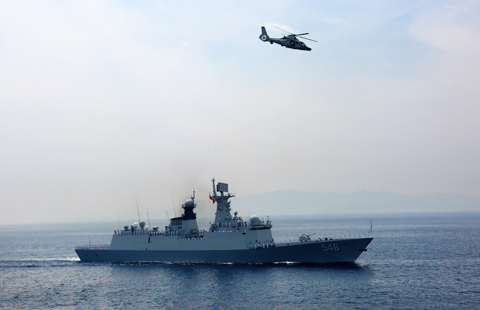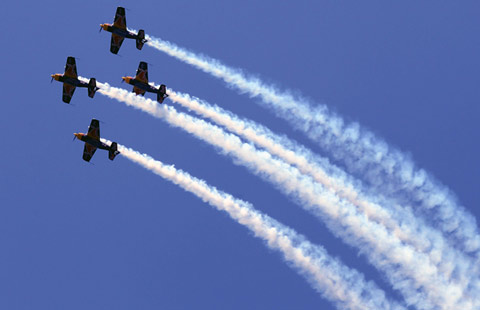NASA tries again to launch new Orion spacecraft
Updated: 2014-12-05 19:40
(Agencies)
|
|||||||||||
CAPE CANAVERAL, Florida - NASA took another shot at launching its new Orion spacecraft Friday, a day after gusty wind and sticky valves held up the critical test flight.
The unmanned rocket holding Orion was poised to blast off at sunrise, although weather was threatening again to interfere. This time, rain and clouds were in the forecast; the wind, while stiffer, was expected to blow in a more favorable direction. Forecasters put the odds of acceptable conditions at 50-50, as a nearly full moon glowed in the sky well before dawn.
Orion will orbit the world twice on this inaugural flight so NASA can wring out the riskiest systems before putting astronauts on board. Future missions will aim for asteroids and, ultimately, Mars. This time, the spacecraft will shoot for a high point of 3,600 miles (5,800 kilometers), farther than any spacecraft built for humans has gone since the Apollo moon program.
The entire mission will last just 4{ hours, culminating with an old-style splashdown in the Pacific. NASA needs that extra-high altitude to gain enough momentum to re-enter at a speed of 20,000 mph (32,000 kph) and submit the capsule's massive heat shield to 4,000-degree (2,000 Celsius) temperatures.
Roads leading into the Kennedy Space Center were less congested for this second time around. Nonetheless, the hotels remained packed, the press site was jammed and NASA still anticipated a full house reminiscent of the shuttle-flying days. Many of the estimated 27,000 guests were expected to return.
Thursday's countdown paused repeatedly in the final few minutes as the wind exceeded safety limits before the valve trouble scrubbed the day's launch. Engineers spent the remainder of the day trying to understand why two fuel valves in the first-stage booster engines behaved so sluggishly. The problem had been detected before on another rocket and officials were confident it could be overcome.
Lockheed Martin Corp., which is conducting the $370 million test flight for NASA, opted for the Delta IV rocket this time given its heft. It's the most powerful unmanned rocket in the US right now. To push Orion farther out on future flights, NASA is developing a megarocket known as Space Launch System or SLS.
The first Orion-SLS combo will fly around 2018, again without a crew. Astronauts are expected to climb aboard in 2021.
Dozens of astronauts, present and past, gathered at Kennedy Space Center for the historic send-off. One of them now leads NASA: Administrator Charles Bolden Jr.
Bolden called Mars "the ultimate destination of this generation," but said his granddaughter thinks otherwise, telling him "Don't get hung up on Mars because there are other places to go once we get there."
Related Stories
Orion company finally wins the 10-year trademark suit 2014-01-16 14:22
Today's Top News
US, Britain pledge to support Afghanistan
HK visit: A political kabuki
Ukraine unlikely to join NATO in near future
Hotpot chain to raise $129m
2014 likely to be record warmest year
Ukraine's ceasefire talks continue
China marks 1st Constitution Day
Outbound tourists hit record 100m
Hot Topics
Lunar probe , China growth forecasts, Emission rules get tougher, China seen through 'colored lens', International board,
Editor's Picks

|

|

|

|

|

|





